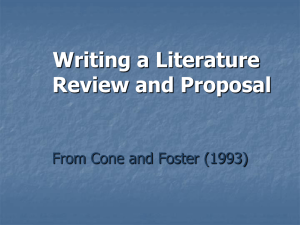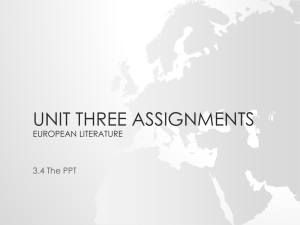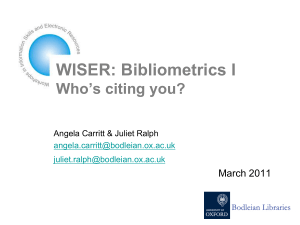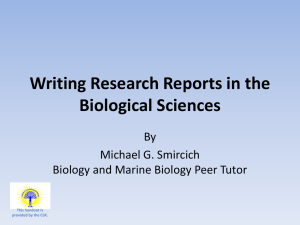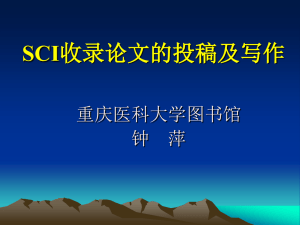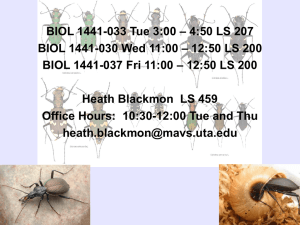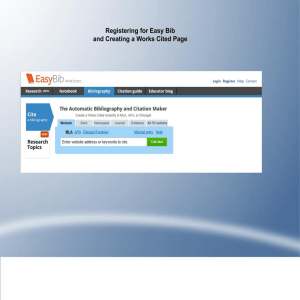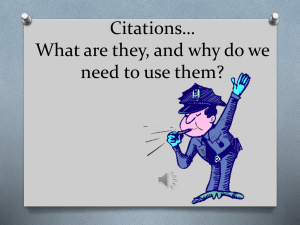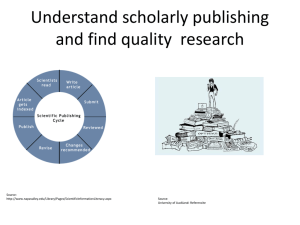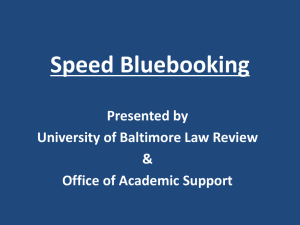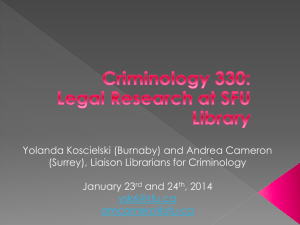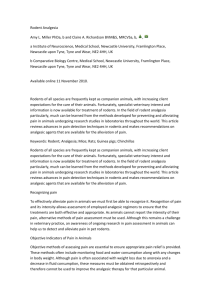Reference List - The University of Auckland Library
advertisement
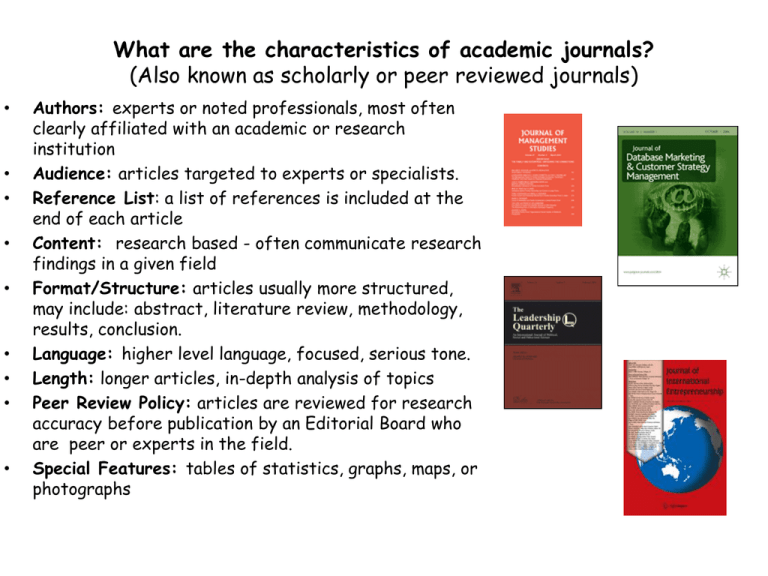
What are the characteristics of academic journals? (Also known as scholarly or peer reviewed journals) • • • • • • • • • Authors: experts or noted professionals, most often clearly affiliated with an academic or research institution Audience: articles targeted to experts or specialists. Reference List: a list of references is included at the end of each article Content: research based - often communicate research findings in a given field Format/Structure: articles usually more structured, may include: abstract, literature review, methodology, results, conclusion. Language: higher level language, focused, serious tone. Length: longer articles, in-depth analysis of topics Peer Review Policy: articles are reviewed for research accuracy before publication by an Editorial Board who are peer or experts in the field. Special Features: tables of statistics, graphs, maps, or photographs “Publish or perish” refers to the pressure to publish articles constantly to succeed in or sustain an academic career. This impacts scholarly output in a number of ways! http://1.bp.blogspot.com/_Vr8Xl0cbUZA/SaEJ1atQ5VI/AAAAAAAAGNw/D- y6GKiAuA/s400/Image+%3D+Cartoon+Publish+Or+Perish+2.gif http://th.physik.uni-frankfurt.de/~jr/gif/cartoon/cart0395.jpg Citation analysis tools • If an academic shows good citation metrics , it is likely that they have made a significant impact on their field. • Google Scholar - Lists citation counts and analysis of authors outputs. • Some business databases give citation counts– e.g.: Business Source Premier, ABI/Inform and Science Direct • Science Direct & Emerald list top papers. • Research databases for citation analysis – Scopus & Web of Science • Academic journal ranking lists can be found on the Web & in Journal Citation Reports database Citations counts – why they don’t always work! • Errors can be due to referencing formats, not all formats require, like APA, that only material cited in the text can be in the reference list. • Environment – researcher could be working in a small field, publishing in another language, publishing mainly in books. • New research won’t have a lot of citations as it hasn’t had time . • Academic journals are of various tier levels, some more prestigious than others. • Caution alert - Google Scholar doesn’t explain what it considers academic, what academic material is accessed & not so good for older material. • Many databases “cited by” feature is only for their particular database 'Cited by' tools • Who's Citing Me? (pdf) On the Business & Economics library page http://www.library.auckland.ac.nz/subjects/bus/general/resources.htm • (See this resource for how to use the features of these database for citation analysis.) • Key Databases • Web of Science find who has cited a particular article or book. This is the main database to use. Good for tracking journal article citations. Poor coverage of New Zealand journals and stronger on science than business • Business Source Premier has Times cited in this database links for some articles. It also has a Cited references button on the top of the page menu bar. Note that the 'cited bys' are only to other items in the EBSCOhost database • ScienceDirect look for the Cited by link for individual records. There is also a link to Cited by in Scopus for individual records. The cited by articles are again. like BSP, only to those titles included in the ScienceDirect and Scopus databases Scopus is related to ScienceDirect (same company owns them). It has a clean search interfaceand it is easy to find the cited by link to the right side of each item in a results list • Google scholar look for Cited by links for some of the results Business Source Premier and some other databases, list “Times cited in this database” both for article and its references. Business Source Premier -Along with some other databases enable references to articles to be examined. Do references demonstrate that a comprehensive body of literature has been explored? Does the reference list combine both seminal (classic) and contemporary (ie: under 5 years old) literature? Scopus database Link from Science Direct article to “cited by” references Science Direct database - Links through to Scopus, a database that lists citing across 16 million peer reviewed articles Web of Science database has a citation index which can graphically represent the citation relationships between academic papers Ranking the academic journals. Example of Management journals in Journal Citation Reports database sorted by impact factor. Impact factor – The number of times articles from a journal are cited within 2 years divided by the total number of articles published in the same journal during the 2 year period Tips for Finding high quality academic articles •Search specialist academic business databases and limit database searches to “peer reviewed” or “scholarly” journals Use features of the databases to view & evaluate cited references & cited by listings •Use Google Scholar “cited by” features and author search. •Use Scopus & Web of Science research literature databases & the Journal Citation Reports database to see an articles impact & journal rankings by various factors. Also critically evaluate the article: •Who is the target audience? When was the article published? •Does the title accurately reflect the contents? •Is the abstract to the article accurate, coherent, nonevaluative, succinct? •Is there a good introduction which orientates the reader to the content? •What are the authors credentials and affiliations? Are he/she/they an authority in the area? •Does the research design clearly explain the methodology and research approach? •Can you use the keywords to extend a search of the topic further? •Is the literature review broad, focussed and balanced? •Does the conclusion successfully present main points of the research, has it demonstrated that the research has presented fresh insights or perspectives? •Does the reference list demonstrate a comprehensive body of literature was explored? (Adapted from : Stockhausen L & Conrick,M. (2002) Making sense of research: A guide for critiquing a paper. Contemporary Nurse, 14, 38-48)

